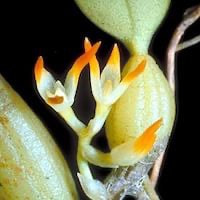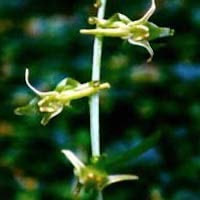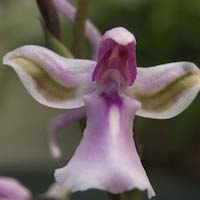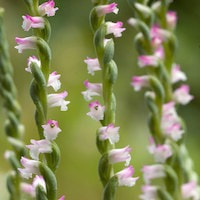MC10- Men's Citrus 10 - 50 shades of Grapes
|
Native Singaporean Orchid notes: Cattleya Chialin Doll 'Toy'
The hybrid Cattleya (Hawaiian Variable x Netrasiri Beauty) has a tan base with bold mahogany spots, making it visually stunning. Its prominent lip, or spathe lip, is bright pink. What sets this hybrid apart is its delightful fragrance, adding to its charm and appeal.
|
Therapeutic Orchid notes:
|
Bulbophyllum Thouars
The orchid Shi duo Lan, also known as Bulbophyllum, gets its name from Greek words meaning bulb and leaf, describing its bulbous pseudobulbs and lush foliage. These orchids are easy to grow and often bloom after temperature changes like storms. While prized for their beauty, only a few Bulbophyllum species are used in medicine. About 23 species are believed to have medicinal properties used in traditional or folk remedies. |
|
Platanthera sikkimensis (Hook f.) Kraenz.
The Changbanshechun Lan orchid's tubers are used as a tonic in traditional Nepalese herbal medicine. These tubers are thought to strengthen and energize the body. Tonic herbs are valued for supporting overall health and vitality. Different Bulbophyllum species may be used in Nepalese medicine, prepared according to local traditions. It's important to seek guidance from healthcare providers or traditional healers for safe and proper use of herbal remedies. |
|
Hemipilia flabellata Bureau & Franch
The orchid known as Duyeyizhi Hua or Meteor rain grass in China is also called Shanchunshehui Lan. It grows in Sichuan, Yunnan, Guizhou, Tibet, and Myanmar's Shan state, preferring damp, rich soil and limestone forests from 2500 to 3200 meters. In Chinese medicine, it's used to moisturize the lungs and treat conditions like dry coughs, tuberculosis, and renal colic. Always seek advice from healthcare professionals or traditional practitioners before using herbal remedies. |
|
Spiranthes sinensis (Pers.) Ames Syn. Spiranthes sinensis (Pers.) Ames var.
The orchid known as amoena (M. Bierberson) Hara goes by many names across Asia, including Shoucao in Chinese, Nejibana in Japanese, and Ta-rae-nan-cho in Korean. It thrives in lowland fields, meadows, and disturbed areas like roadside drains in Brisbane. It prefers moist environments and grows in both acidic and alkaline soils. In traditional Chinese medicine, it's used to strengthen the kidneys and treat conditions like spitting blood. Always seek professional advice for proper use. |
Other scent note
Scentopia Library Reference ingredient
Blueberry - Check details at Scentopia's scent library
Download the guided mediation that works best with this Orchid fragrance oil
| men_citrus_essential_oil_orchi_00010.mp3 | |
| File Size: | 173746 kb |
| File Type: | mp3 |




